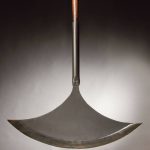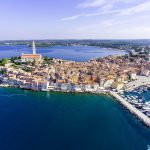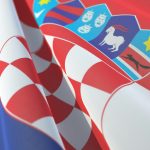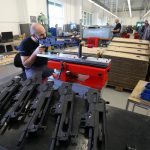As Poslovni Dnevnik/Marija Crnjak writes, there is almost no 10-year-old child in the entire world who doesn’t own a skateboard, a BMX or some form of scooter at home. They ride them along the streets, in car parks or in city squares, as well as on specially designed concrete playgrounds.
Skate parks are playgrounds specially made for all such children and they will often spend hours, days and years on them, and many will be there literally every day. In the skate parks they get the opportunity to hone their skills and get better and better at their sport. In many countries around the world, statistics show that investing in skate parks greatly contributes to reducing the abuse of gateway drugs, alcohol and juvenile delinquency.
This is how the team of skaters behind Tonbe Skateparks communicates to potential investors on their website, with detailed explanations of how to get to their skate parks, concrete ones, for which they specialise and are the first to create them in the region.
They do everything by hand, each of their Tonbe Skateparks is unique, they follow European safety standards, and they don’t even notice the ongoing coronavirus crisis, because their hands are full with work, most of which is for European cities, and finally more and more jobs are being contracted right here in Croatia. However, their biggest wish is to create a skate park in Zagreb, and they hope that the stars have finally aligned in this regard as well.
“The level of demand for our services is very high, there aren’t enough of us here on the European market to meet the needs of cities that want to have this kind of content. Although we earn twice as much abroad than we do here in Croatia, it’s important for us to promote skate culture in our country and that’s why we’re missing out on two jobs in Germany to complete some projects here at home,” revealed Marin Dundic, the owner of Petarda, a skater who Launched the Tonbe Skateparks project four years ago.
The initiative started from the long-standing frustration from Zagreb and skaters from other Croatian cities who felt that local government units simply didn’t listen to their needs, and young people into this sport were often just left to improvise in illegal parks, which isn’t always understood by everyone. Marin Dundic’s Tonbe Skateparks team was the one who built the first skate park in Spansko way back in 2000, and seven years later the company built the first concrete “pool” in the Student Centre in Zagreb, which was also the second of its kind in the whole of Europe.
Unfortunately, the SC Management demolished the pool, which was actually classified as a sculpture, and the tender for a new skate park in Spansko was binned even before the local elections in Zagreb took place. In the meantime, the idea of a new park on Bundek has been circulating for a long time, but skaters have never really had a firm thumbs up from the late Zagreb Mayor Milan Bandic. As they themselves have experienced a series of failures in trying to get a skate park in the city, today on the Tonbe Skateparks website they give detailed instructions and advice to young people, from how to approach local government units to how to design what they need in the parks.
In addition to Dundic, the Tonbe Skateparks team consists of a total of six experts, graduate engineers of architecture and civil engineering, carpenters, locksmiths, reinforcement workers and specially trained experts for the smoothing and shaping of concrete.
All of them have their roots mainly in skateboarding and BMX riding and are still actively engaged in it, which allows them to constantly follow trends in these sorts of sports and disciplines, as well as innovation and originality in the construction of skate parks. They decided on concrete because it is the best material and driving surface for all such sports, it is almost indestructible and resistant to the elements, and there’s almost no need for maintenance for many, many years.
Large projects in Fazana and Zagreb
Dundic pointed out that in their parks, things are designed and built in accordance with specific needs, the terrain, and the amount of available land that is usually provided by the local community.
In addition to that, the construction of a skate park on a site means that almost all the material is purchased in the local community, explained Dundic, meaning no imports and unnecessary costs of transport and delivery of large machines take place, which reduces the overall cost of the skate park. Often, costs such as excavating a skate park can be covered by the city, as can the providing of the concrete.
“The construction of skate parks, as well as children’s parks and playgrounds, both in Croatia and in Europe is in the domain of public investment, and represents an investment in facilities that will provide young people with a quality life and away sitting at home and being addicting to the internet and computer/video games. It rarely happens that investors are private,” explained Dundic.
When it comes to costs, things can stand from anywhere between 200 thousand kuna up to half a million kuna or sometimes even more. About 1.5 million kuna is planned, for example, for the construction of a large skate park Mediteran in Fazana in Istria, which will be made according to the conceptual design of the Swedish skate house Bryggeriet.
Dundic is definitely planning to apply for this tender when it is finally announced, as well as for the new tender for Spansko, which is also expected soon. In the meantime, they have completed the parks in Krizevci, Pozega and Solin, the park in Vukovar is in operation, and things in Slavonski Brod is moving along nicely.
For more, follow Made in Croatia.











